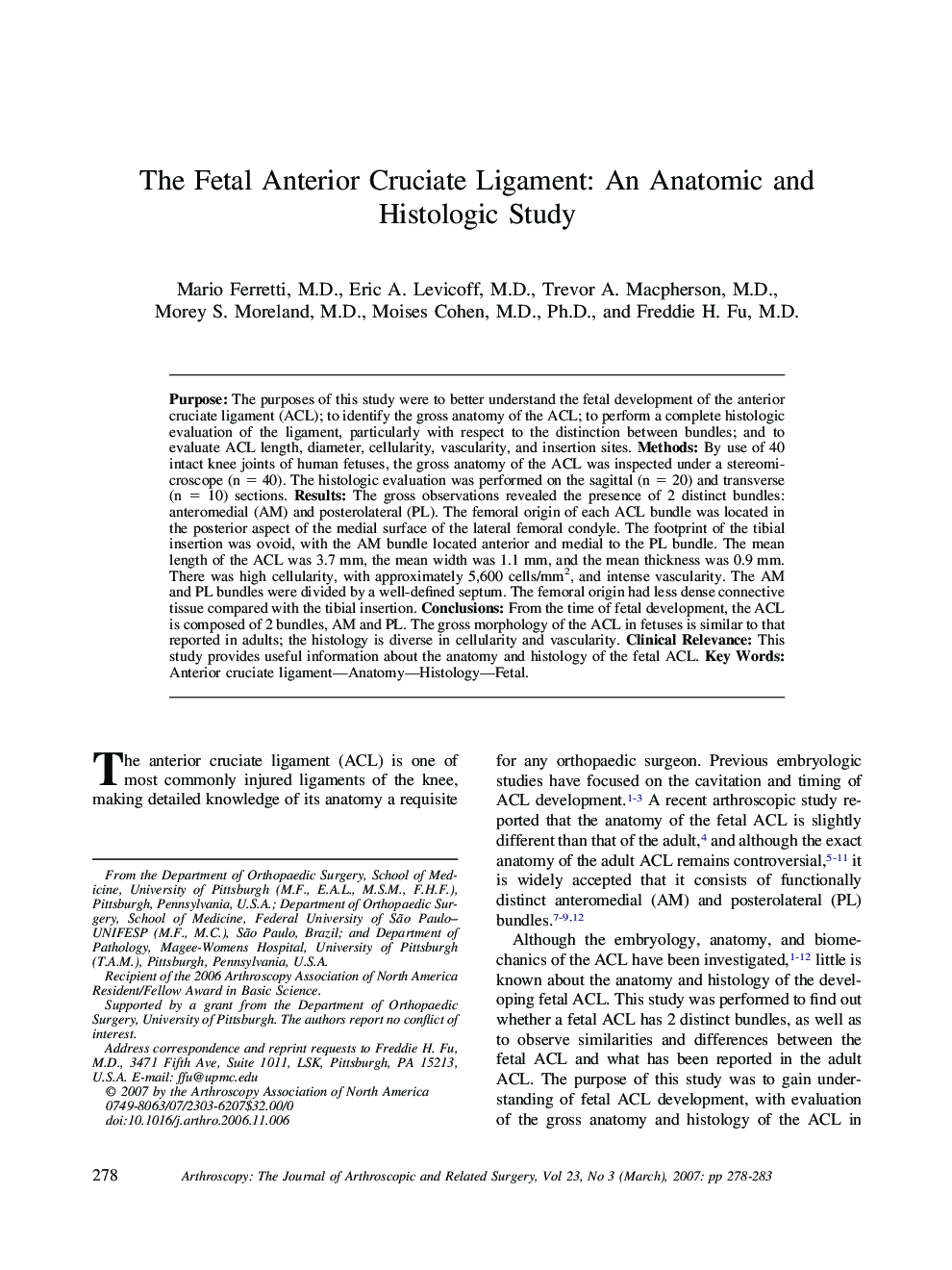| Article ID | Journal | Published Year | Pages | File Type |
|---|---|---|---|---|
| 4047619 | Arthroscopy: The Journal of Arthroscopic & Related Surgery | 2007 | 6 Pages |
Purpose: The purposes of this study were to better understand the fetal development of the anterior cruciate ligament (ACL); to identify the gross anatomy of the ACL; to perform a complete histologic evaluation of the ligament, particularly with respect to the distinction between bundles; and to evaluate ACL length, diameter, cellularity, vascularity, and insertion sites. Methods: By use of 40 intact knee joints of human fetuses, the gross anatomy of the ACL was inspected under a stereomicroscope (n = 40). The histologic evaluation was performed on the sagittal (n = 20) and transverse (n = 10) sections. Results: The gross observations revealed the presence of 2 distinct bundles: anteromedial (AM) and posterolateral (PL). The femoral origin of each ACL bundle was located in the posterior aspect of the medial surface of the lateral femoral condyle. The footprint of the tibial insertion was ovoid, with the AM bundle located anterior and medial to the PL bundle. The mean length of the ACL was 3.7 mm, the mean width was 1.1 mm, and the mean thickness was 0.9 mm. There was high cellularity, with approximately 5,600 cells/mm2, and intense vascularity. The AM and PL bundles were divided by a well-defined septum. The femoral origin had less dense connective tissue compared with the tibial insertion. Conclusions: From the time of fetal development, the ACL is composed of 2 bundles, AM and PL. The gross morphology of the ACL in fetuses is similar to that reported in adults; the histology is diverse in cellularity and vascularity. Clinical Relevance: This study provides useful information about the anatomy and histology of the fetal ACL.
